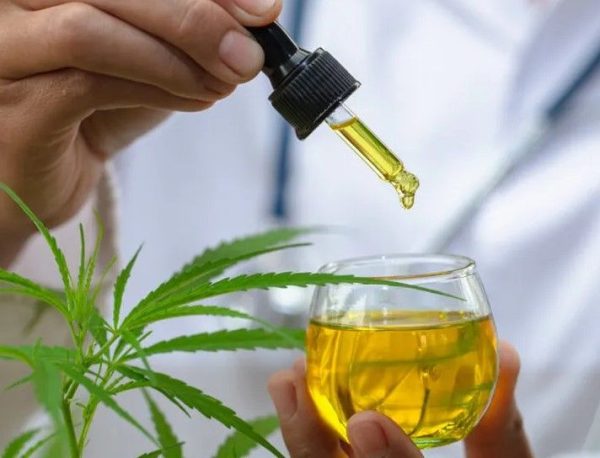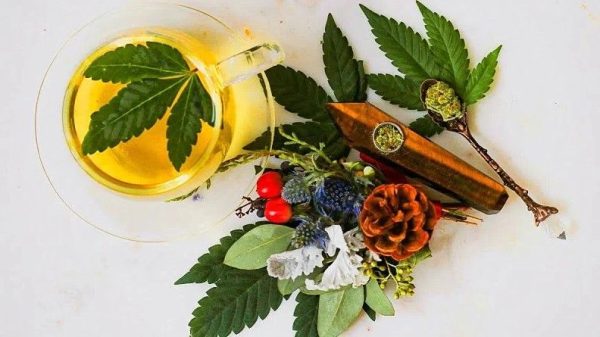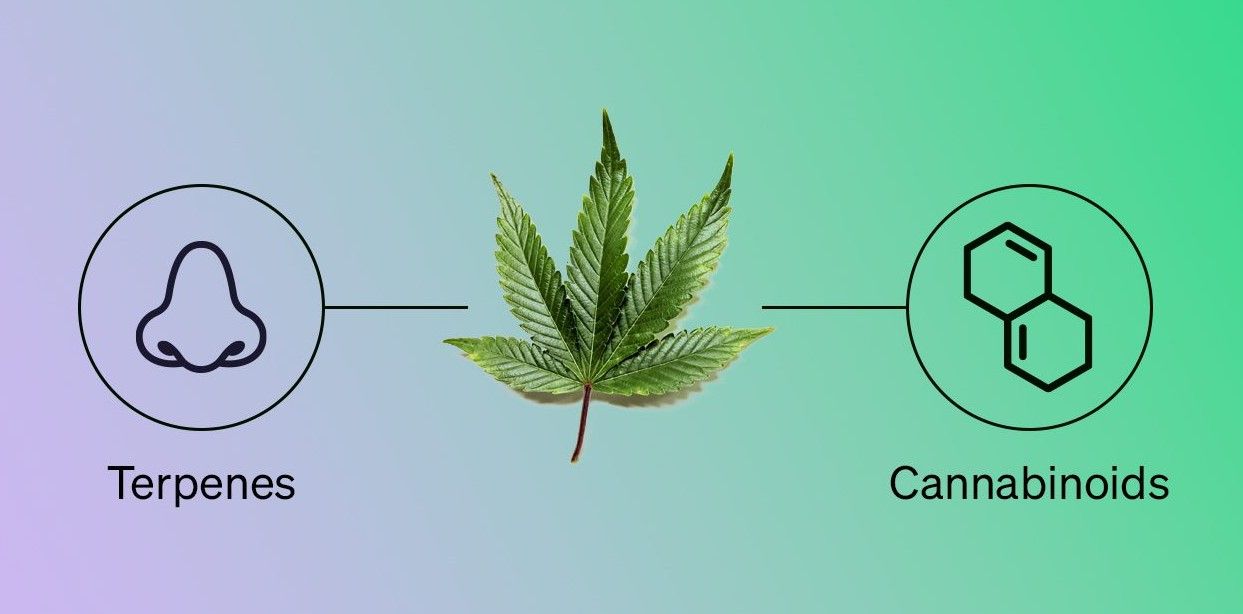For decades, experts have pinned the effects of cannabis on cannabinoids such as tetrahydrocannabinol (THC) and cannabidiol (CBD). However, researchers have recently shown that other cannabinoids, like CBG, THCV, THCA, and CBN, also contribute to the plant’s potential therapeutic effects.
It is also becoming more evident that marijuana contains another class of active compounds; terpenes. They are aromatic chemicals responsible for giving marijuana its wide range of tastes and aroma. In addition to their unique smells and flavors, terpenes may play a crucial synergistic role that allows cannabinoids like CBD to have a therapeutic effect.
A number of the most prevalent terpenes are discussed in this post. We look at their possible impacts on the body and whether they enhance cannabinoids’ effects.
How Cannabinoids Work in the Body
To comprehend how cannabinoids function in the body, we must first understand the endocannabinoid system (ECS). It’s a cell-signaling mechanism discovered in the 1990s that controls a variety of functions, including:
- Memory
- Sleep
- Fertility
- Appetite
- Mood
Naturally, the body produces endocannabinoids, which are comparable to those found in Cannabis sativa. Researchers have discovered 2-arachidonoylglycerol (2-AG) and anandamide (better known as the “bliss” molecule) thus far. These are two important endocannabinoids that the body creates when needed.
Enzymes may also break down endocannabinoids after they have served their function.

How Cannabinoids Interact with the ECS
The interaction between the cannabinoids in cannabis and the ECS is different. THC binds to CB1 and CB2 receptors, for example. The consequence is a powerful intoxicating effect. In contrast, CBD does not bind to receptors in the same way. It’s been suggested that CBD binds to an unknown receptor.
Another hypothesis is that a lack of endocannabinoids causes a number of chronic diseases. The ECS’s mission is to maintain homeostasis in the body. If the ECS isn’t able to accomplish this, it might be due to a lack of endocannabinoid production.
According to a research published in 2016, an endocannabinoid deficit may be responsible for IBS, fibromyalgia, and migraine. It would also shed light on why consuming cannabinoids such as cannabis or hemp might help with symptoms.
What Are Terpenes & What Can They Do for You?
Terpenes are not exclusive to marijuana. These chemicals are present in most plants and edible herbs. Because of their chemical structure, they are aromatic molecules. As a result, they are responsible for giving marijuana its many varied tastes and fragrances. It is thought that these odors have developed in the wild to repel insects, fungus, and other potential predators because of their unique chemical structures
In terms of functionality, terpenes’ aromatic qualities are only one aspect of their physiological impact.
For example, a 2011 study published in the British Journal of Pharmacology found that beta-caryophyllene – a common terpene present in many herbs (including cannabis) – has gastro-protective effects. It may aid in the treatment of ulcers, inflammation, and perhaps autoimmune diseases.
Beta-caryophyllene’s ability to physically bind to CB2 receptors in the body’s immune response system, where it acts as a full agonist, makes sense. CBD and THC were formerly thought to be the only effective cannabis components that could bind to endocannabinoid receptors.
Terpenes are chemically comparable to cannabinoids. They are produced by the same part of the plant (resin glands). The primary structural difference is a recurring aromatic 5-carbon ring called isoprene, which isn’t present in CBD or THC.
Cannabis-Specific Terpenes
It’s difficult to say exactly how many different terpenes abound in the plant, but they exist in high enough quantities that research suggests there are at least 150 of them. Nonetheless, the impact of particular terpenes in cannabis is yet not well-researched. We know little about their effects inside the body. What is true, however, is that terpenes function in tandem with active cannabinoids.
This implies that the effects of both THC and CBD are almost certainly due to the presence and activity of terpenes.
For example, CBD and THC have been shown to have therapeutic effects in their pure, isolated molecular forms. However, it is widely accepted that when taken as a whole-spectrum supplement, their effects on the body are significantly enhanced. This phenomenon is known as the entourage effect, which we will discuss later. A full-spectrum extract comprises almost all if not all of the components found in cannabis.
Terpenes & Intoxication

Another advantage of cannabis is that the various types of terpenes found in it may create a sense of euphoria. This is backed up by studies showing that high doses of THC seem to increase the production of endocannabinoids, which are responsible for giving users a sensation of well-being. Terpenes also have been linked with marijuana’s intoxicating “high.”
Strawberry Cough and Northern Lights are two different strains that have very distinct effects. While the Strawberry Cough strain provides an energetic, uplifting high, Northern Lights gives a very sedating, soothing high that can help you fall asleep and become immobilized on the couch. Both of these strains, however, contain a similar amount of THC (between 20% and 25%).
The various effects of these strains could be due to their terpene compositions. Strawberry Cough and Northern Lights also have distinct odors and tastes from one another, which is worth noting.
According to some budtenders, consumers devote too much attention to THC quantity. Instead of focusing on a strain’s THC content, they propose looking at specific terpene profiles.
If marijuana isn’t legal in your state, you may choose to prioritize full-spectrum CBD products derived from hemp. Although there are some limits, most states allow CBD from hemp as long as the THC concentration is below 0.3 percent.
CBD tinctures with full-spectrum extractions, such as PureKana’s, include a variety of components, notably cannabinoids and terpenes. The difference between broad-spectrum and narrow-spectrum CBD products is that the former contains no THC.
What Are Some of the Most Common Terpenes in Marijuana?
Only a few of the hundreds of terpenes present in cannabis have enough of a presence to produce clear effects. The following are several of the most prevalent marijuana terpenes.
Linalool
The presence of linalool in cannabis is due to a naturally occurring terpene present in the lavender plant. Linalool is abundant in any cannabis strain with a lovely lavender scent. It’s linked to advantages such as stress reduction and anxiety alleviation. When applied topically, it may function as an excellent natural treatment for acne and other skin problems.
Myrcene
The most frequent cannabis terpene is myrcene. It has a dank, earthy, musky scent similar to cloves. As far as its synergistic properties are concerned, it might function as a good muscle relaxer and help with pain and inflammation relief. It’s also a sedative that may be found in high amounts in marijuana strains that produce couch lock.
Limonene
The “citrusy” terpene is one of the most potent. Limonene, any cannabis strain with a pungent citrus fragrance like Agent Orange or Lemon and Citrus Kush, is plentiful in. It might be used as an anti-seizure medication because to its effects on mood and heartburn and acid reflux alleviation. Furthermore, clinical studies have shown that it can help dissolve gallstones and destroy pathogenic microbes, among other things.
Alpha-pinene
The terpene pinene is found in high amounts in natural pine oils and gives marijuana strains like Orange Sorbet, Jack Herer and Chemdawg their distinctive “piney” odor. It is the most frequent plant terpene across the world, and it’s been used to treat asthma patients as a therapy. Furthermore, it has been said to enhance memory, attention, and general energy levels.
Beta-caryophyllene
This terpenoid may be found in a variety of edible plants, such as oregano and black pepper. It binds to CB2 receptors in the immune system, suggesting that it might have complementing functions in the management of inflammation and autoimmune diseases. It could also aid in the prevention of ulcers, as well as being a gastro-protectant.
Are Cannabinoids and Terpenes Better Together? Analyzing the Science
Both cannabinoids and terpenes appear to offer a slew of advantages. They may enhance cortical activity, increase blood flow, and reduce anxiety when combined. However, when they are combined, they produce even more significant effects via the entourage effect.
According to this theory, the effects of cannabis cannabinoids, terpenes, and other components are more powerful when combined than they are when taken alone. It’s one of the reasons why companies selling CBD and THC products try to provide full-spectrum choices.
Ethan Russo has written about the existence of this phenomenon in great depth. He added, in a 2018 study, “the case for cannabis synergy via the entourage effect is presently sufficiently strong as to suggest that one molecule would unlikely to match the therapeutic and even industrial potential of cannabis itself as a phytochemical factory.”
According to researchers, a combination of terpenes and cannabinoids might have anxiolytic and antidepressant effects.
A study published in 2020 found that a combination of terpenes and cannabinoids may have anxiolytic and antidepressant effects.
However, Peter S. Cogan’s study Expert Review of Clinical Pharmacology published in 2020 was critical of the entourage notion and suggested that claims like these are unsubstantiated and simply used for marketing purposes.
The entourage effect has been a popular topic in the cannabis industry since it was first discovered. Cannabis bears high concentrations of tetrahydrocannabinolic acid, but Bredt et al.’s 2019 study published in Cannabis and Cannabinoid Research debunks the idea that there is an entourage effect. The researchers found that the most common terpenes in Cannabis sativa had no impact on CB1 and CB2 functional activity.
It is apparent that there is a substantial debate within the scientific community about the entourage effect.
Final Thoughts: Are Terpenes Better Than Cannabinoids?
It would be wrong to claim that terpenes or cannabinoids are superior to one another. In fact, it’s believed that they operate together rather than operating independently.
However, there has been a lot of discussion about the importance of terpenes in cannabis as they are thought to have an effect on THC’s impact on the brain, which is why many people find it difficult to determine when and how much marijuana should be used. Terpenes are said to be responsible for giving marijuana its unique highs and varied psychoactive effects from strain to strain because of their involvement with THC activity in the central nervous system.
We don’t know exactly how cannabis terpenes affect human physiology, but we do know that without them, the pharmacological, therapeutic, and psychoactive effects of cannabinoids like THC and CBD would be significantly less.

